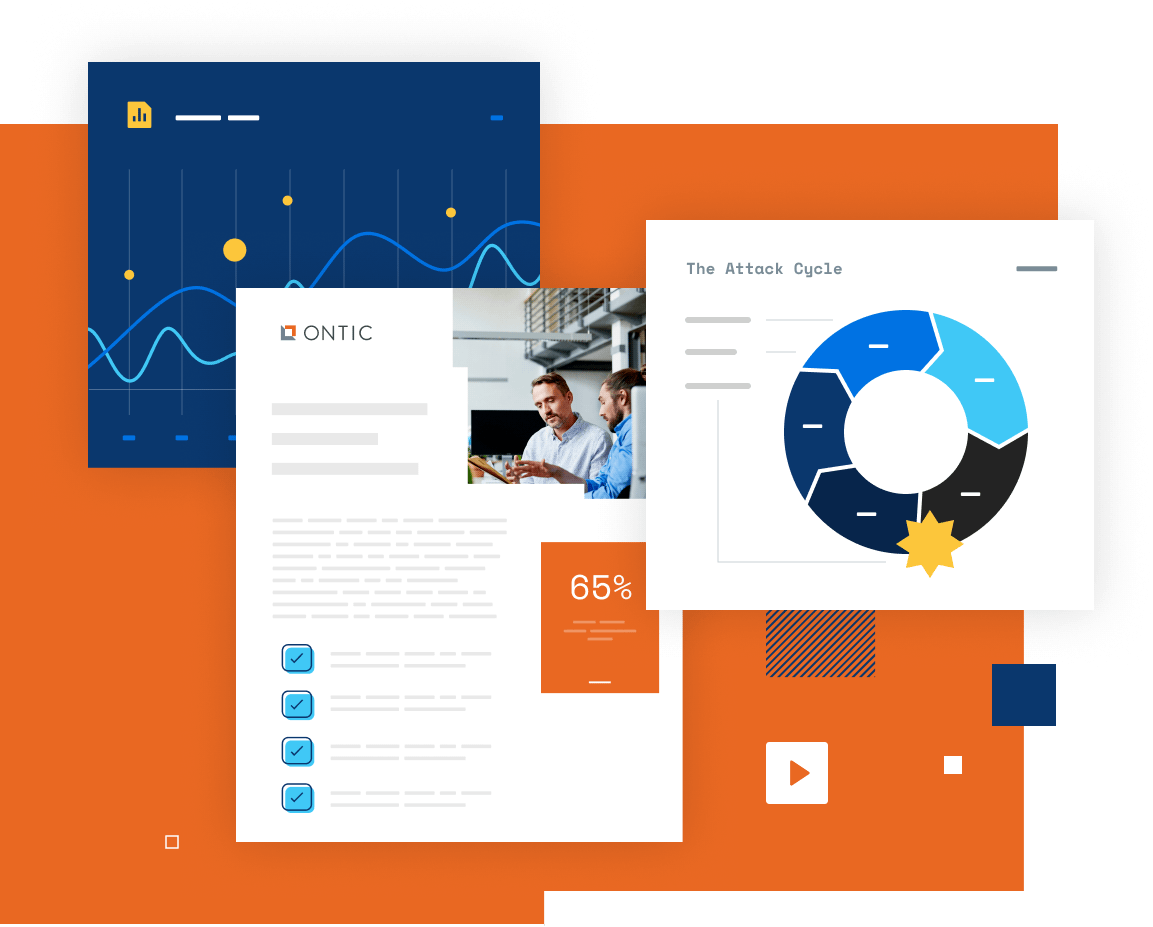Demonstrating The Complexity of a Corporate Security Investigation
You already know what it takes to run a corporate investigation — now help your executives understand

As a corporate security professional, you know that a strong investigation program requires purpose-built solutions that connect critical data, integrate seamlessly with case management workflows, and enable cross-functional collaboration. But when it comes time to securing budget, you’ve likely heard questions like, “Can’t marketing help find threats?” or “Isn’t this cyber’s responsibility?”
Too often, executive teams underestimate the complexity of corporate investigations. Or worse, they assume existing tools and departments are enough. In reality, the work is far too nuanced to rely on spreadsheets, scattered emails, and siloed systems — or to passively wait for someone else to surface a threat.
This resource is designed to help you close that gap in understanding. It walks through the full lifecycle of a strong corporate investigation — from how to set the foundation to case closure — so you can demonstrate the need for more than just manual processes and pieced-together tools. With a platform like Ontic that connects intelligence and investigations, your team can surface threats earlier, act with clarity, and manage risk proactively.
Download the executive version below to give your decision makers a PDF that addresses their priorities and typical concerns.
A step-by-step look at how corporate investigations work
Many people outside of corporate security don’t realize the complexity of a high-quality investigation. Below is a generalized workflow, designed to help non-security stakeholders understand what goes into managing a case the right way — from early signals to post-case evaluation.
01
Set the foundation before a case emerges
- Define what needs protection: People (employees, executives, customers), assets (facilities, equipment, inventory), and information.
- Centralize and integrate data sources: From access control and HR systems to CRM, surveillance feeds, cyber alerts, and more.
- Clarify roles and responsibilities: Determine who can access, write, or close reports; set clear notification protocols by incident type.
- Update policies and workflows: Make sure documentation, privacy, and escalation policies reflect how your business operates (remote vs. in-office, multi-site, etc.).
Potential slowdown: Without a centralized system for threat actor and case information, you’re stuck with spreadsheets, emails, and siloed systems, making it hard for the right stakeholders to access the information, slowing investigations, and increasing the risk of missed threats.
02
Detect and monitor early signals
- Automate monitoring for anomalies and alerts: Use connected systems to watch for physical access anomalies, social media threats, policy violations, and unusual behavior.
- Define triage workflows: Assess whether each concern meets the threshold for formal investigation, and assign urgency levels.
Potential slowdown: Using manual, pieced-together systems to monitor and prioritize signals increases the risk of missed warning signs, delayed response, and focusing on the wrong threats due to an incomplete understanding of the full threat landscape.
03
Launch the investigation
- Initiate workflows and assign a lead: Use a centralized platform to begin the process, document activity, and notify stakeholders (HR, Legal, etc.).
- Identify the person(s) of interest: Use internal records, surveillance, and behavior analysis to determine who may be involved.
- Gather foundational facts: Document the “who, what, when, and where” — ensuring all relevant context is captured.
04
Collect, interview, and analyze
- Conduct structured interviews: Talk to employees, managers, and other witnesses who may have knowledge of the incident.
- Investigate historical and external data: When appropriate, look into prior incidents, third-party intelligence, and community sources.
- Interview the subject of concern: This may be handled by HR, Legal, or Security, depending on severity and context.
- Analyze patterns and related incidents: Use past investigations and behavioral trends to identify risks or links.
- Continuously monitor threat actors: Even if you’ve resolved a situation involving a potential threat actor, it’s essential to keep monitoring their behavior to proactively identify any signs of escalation.
Potential slowdown: Getting a complete view of a case (and continuously monitoring threat actors) is tough when research and workflows are disconnected. This requires manual searches across multiple sources, leading to overlooked details and delayed responses that increase risk.
05
Assess threat level and mitigation options
- Use a formal risk or threat framework: Determine if there is a pathway to harm or material impact.
- Document and act on findings: Implement security, HR, or operational strategies to contain or mitigate risk.
- Notify internal leaders and stakeholders: Expand communications based on severity, including media relations, legal, or external partners as needed.
Potential slowdown: When case documentation is spread across siloed systems, getting the right information to the right people is challenging — slowing response and making it harder to contain risk. A centralized system with controlled access ensures speed and coordination.
06
Close the case (with the right caveats)
- Document everything: Ensure every step is centrally recorded and accessible to those with appropriate permissions.
- Set closure conditions: Whether mitigated, unresolved, or referred externally, make sure closure reflects current knowledge — and plan to reassess if new data emerges.
07
Learn, evaluate, and improve
- Track investigation metrics: Analyze resolution rates, incident types, timelines, and team performance.
- Conduct after-action reviews: Capture lessons learned and update protocols accordingly.
- Preserve institutional knowledge: Build dashboards and documentation practices that scale and adapt to emerging threats.
Potential slowdown: Without a system to track metrics and preserve case information, historical data gets buried in siloed systems and spreadsheets, making it hard for your team to learn, improve, and scale over time.
Why strong corporate investigations demand a purpose-built platform
Corporate investigations are too complex to manage with generic cybersecurity tools or project management platforms. A purpose-built investigation solution brings together intelligence, threat actor data, and critical case information in one centralized location, so nothing falls through the cracks.
Explicitly designed for investigative workflows, modern security platforms help teams connect the dots faster, maintain clear audit trails, and act decisively. Unlike pieced-together or homegrown solutions, the right tools eliminate silos and inefficiencies while ensuring that only the appropriate stakeholders have access to key data. This gives you a clear, unified view of threats — and the peace of mind that case information is properly controlled.
Who benefits from better investigations?
When corporate investigations are well-run, the entire organization gains — not just the security team.
- HR: Receives support in addressing employee issues early, preventing them from escalating into productivity losses or, in the worst cases, violence.
- Legal: Benefits from clear documentation, defensible processes, and early risk detection.
- Finance: Avoids potential legal settlements, operational disruption, and reputational damage.
- Executives: Resolving security incidents that risk financial losses or hinder growth will increase executives’ confidence in achieving business goals.








